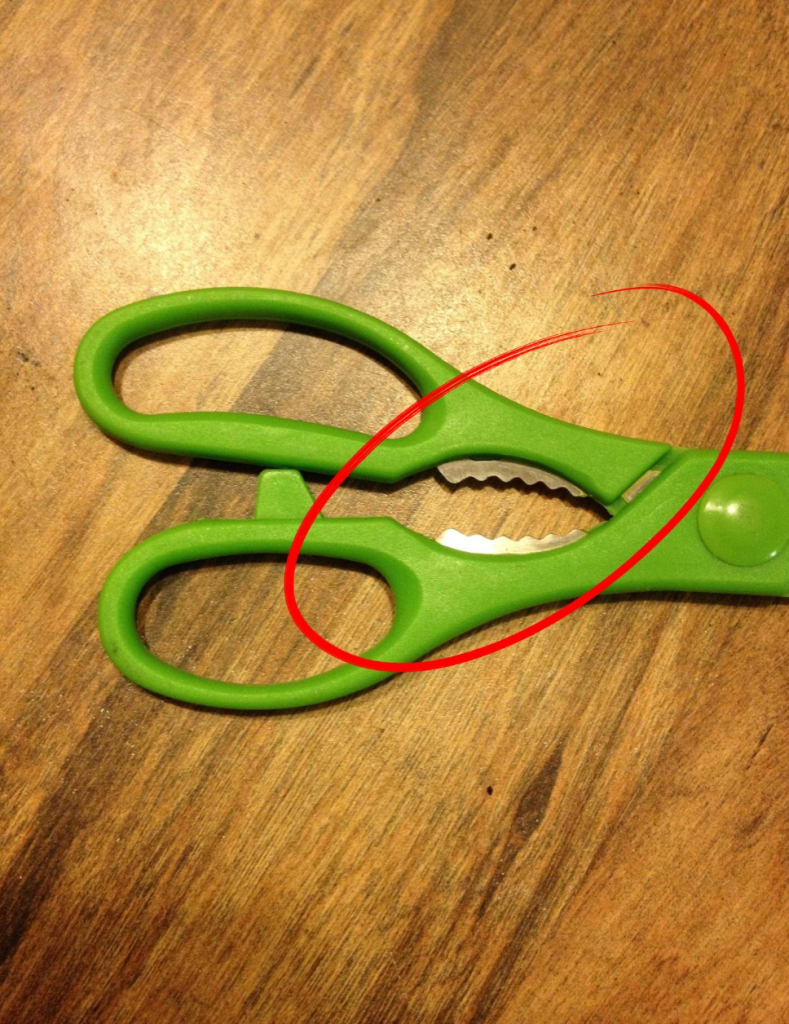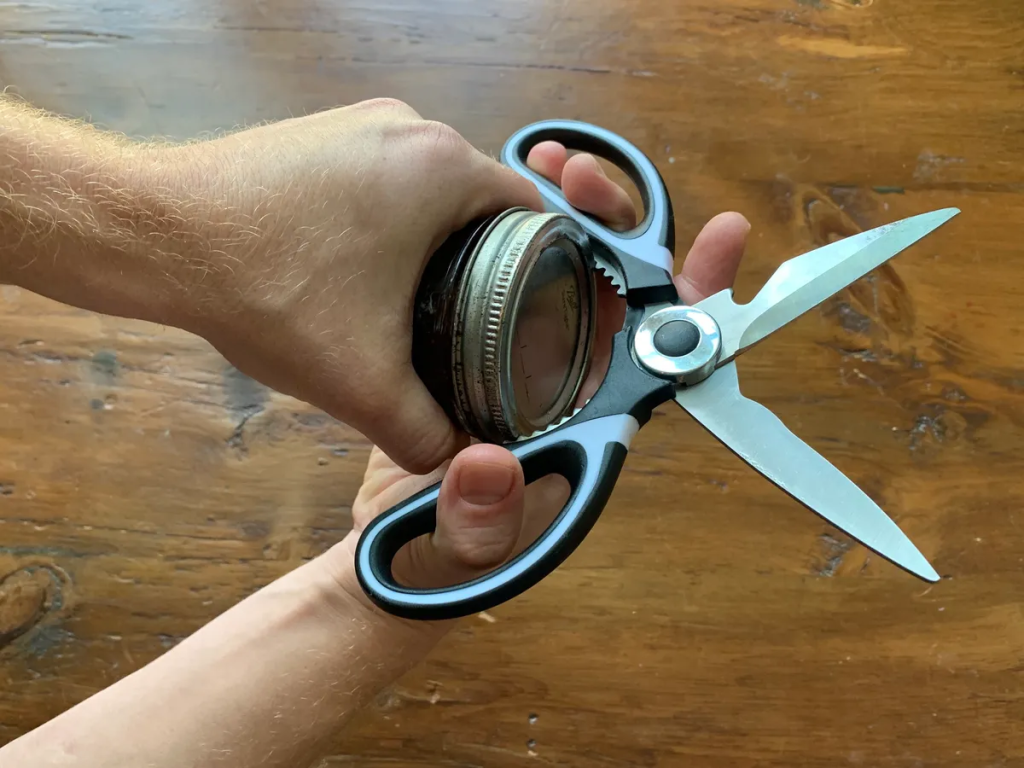If you’ve ever examined your kitchen scissors closely, you might have noticed a small jagged or ridged section between the handles, right where your fingers rest. At first glance, it can look like an odd design quirk, maybe even something decorative. But here’s the surprise: it’s a fully functional, built-in tool designed to make your kitchen life easier. Known by many names — jar opener, nutcracker, bone gripper — this toothed section is strategically placed and reinforced to give you extra traction and grip. It turns a simple pair of scissors into a versatile multi-tool, perfect for tackling stubborn kitchen challenges that have nothing to do with cutting.

The Jar-Opening Secret
One of the most practical uses for this feature is opening tough jar lids. We’ve all been there — wrestling with a vacuum-sealed jam jar that refuses to budge. Instead of straining your wrists or banging it against the counter, simply close your kitchen scissors until the teeth meet, place the lid into the ridged section, and twist. The grooves increase traction while applying even pressure, helping the lid loosen with far less effort. This trick works on smaller bottle caps too, making it perfect for soda, sauce bottles, and tonic water. It’s especially helpful for those with arthritis or reduced grip strength, making it a small but mighty accessibility upgrade.
Video: WHY DO KITCHEN SCISSORS HAVE TEETH? Smart Kitchen Hack You Need to Try Right Now
Cracking Nuts Like a Pro
No nutcracker? No problem. That toothed section can double as a shell cracker for walnuts, pecans, and hazelnuts. Just position the nut in the ridges, squeeze gently until the shell cracks, then rotate and repeat until it’s easy to peel away. The key is steady, controlled pressure — you want to break the shell, not crush the entire nut.
Breaking Down Poultry With Ease
If you own heavy-duty kitchen shears, especially poultry or bone shears, that ridged section can also help with cutting through small bones like those in chicken wings or thighs. Grip the bone in the ridges, apply steady pressure, and you’ll get a cleaner cut without the scissors slipping. Just be sure your scissors are designed for this — lightweight models can bend or break under the pressure.
Other Clever Uses You Might Not Expect

The toothed section can grip slippery plastic caps on juice jugs, crack crab legs or lobster shells, twist out soft corks, or hold tight to stubborn twist-ties so you can cut them more cleanly. Whenever your hands are slipping and you need extra grip, this little feature is often the solution.
Why Manufacturers Include It
Video: What are the metal teeth on kitchen scissors for ?
Adding this small detail doesn’t take up extra space or require additional tools, yet it dramatically increases the scissors’ versatility. It’s a cost-effective way to combine multiple kitchen gadgets into one, especially valuable in smaller kitchens where storage is tight.
Conclusion: More Than Just Scissors
The toothed part on your kitchen scissors isn’t just a random design choice — it’s a built-in helper for opening, cracking, gripping, and twisting. The next time you struggle with a stubborn jar, a nut shell, or a slippery bottle cap, remember that your scissors can do a lot more than cut. With this hidden feature, you’ve got a small but powerful problem-solver right in your drawer.



